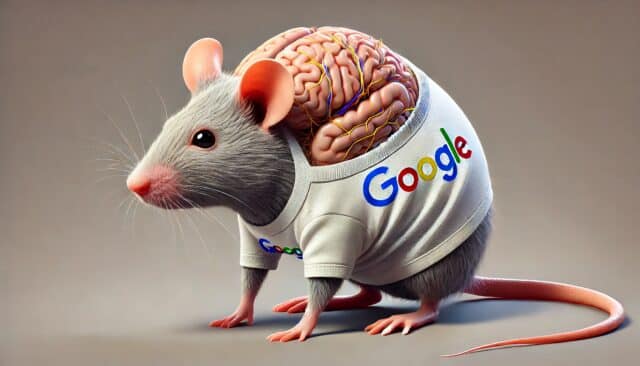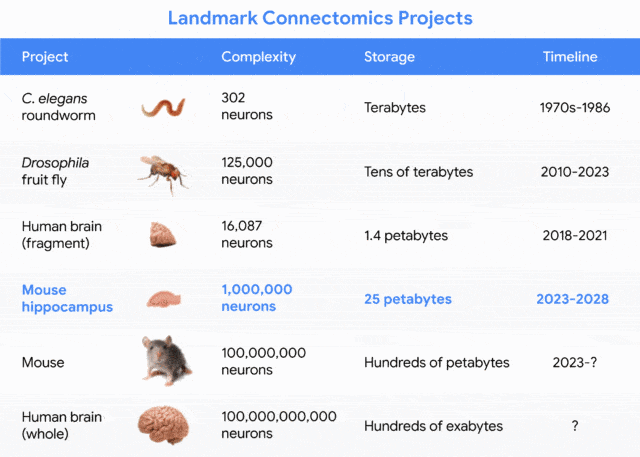Google maps mouse brain

Researchers on Google's Connectomics team have achieved the largest AI-assisted digital reconstruction of human brain tissue to date. Now, they are turning their attention to the mouse brain to further unravel the mysteries of neural connections.
The recent accomplishment involved mapping just 1 cubic millimeter of human brain tissue, a task that required an astounding 1.4 petabytes of data. This tiny section, equivalent to half a grain of rice, revealed unexpected structures within neurons. "We found some of the wires will wrap themselves into these giant knots," says Google Research Scientist Viren Jain. "We have no idea why -- nobody's ever seen it before."
The human brain comprises about 86 billion neurons connected by more than 100 trillion synapses. By creating detailed maps of these connections, known as a "connectome," researchers hope to gain insights into memory storage, object and face recognition, sleep necessity, and the malfunctions leading to brain diseases like Alzheimer's.
The Connectomics team, established by Google Research a decade ago, has made significant advancements in imaging techniques, AI algorithms, and data management tools to handle the massive data requirements of brain mapping. They introduced flood-filling networks and the SegCLR algorithm to automate the tracing and identification of neural pathways, along with tools like TensorStore and Neuroglancer for managing and visualizing large datasets.
While mapping the entire human brain is currently impractical due to technological and financial constraints, the team has focused on smaller, feasible projects. Notable achievements include mapping half of a fruit fly’s brain and portions of zebra finch and zebrafish larvae brains. The recent human brain tissue map was published in Science and has been a resource for thousands of researchers worldwide.
The team's current project, in collaboration with Harvard, Princeton, and other institutions, aims to map the mouse hippocampus, responsible for memory encoding, attention, and spatial navigation. Although a mouse brain is significantly smaller than a human brain, mapping it remains a formidable challenge due to the scale of data involved, estimated to be around 20,000-30,000 terabytes.

“If we were to map the whole human brain right now, it might take billions of dollars and hundreds of years,” Jain explains. The mouse connectome project represents a manageable step forward, potentially offering valuable insights relevant to human brain function and disorders.
This research builds on the foundation laid by earlier connectome studies, including the first-ever connectome of a worm's brain published in 1986. The Connectomics team's work not only pushes the boundaries of current technology but also aims to unlock fundamental understandings of brain function and disease.
